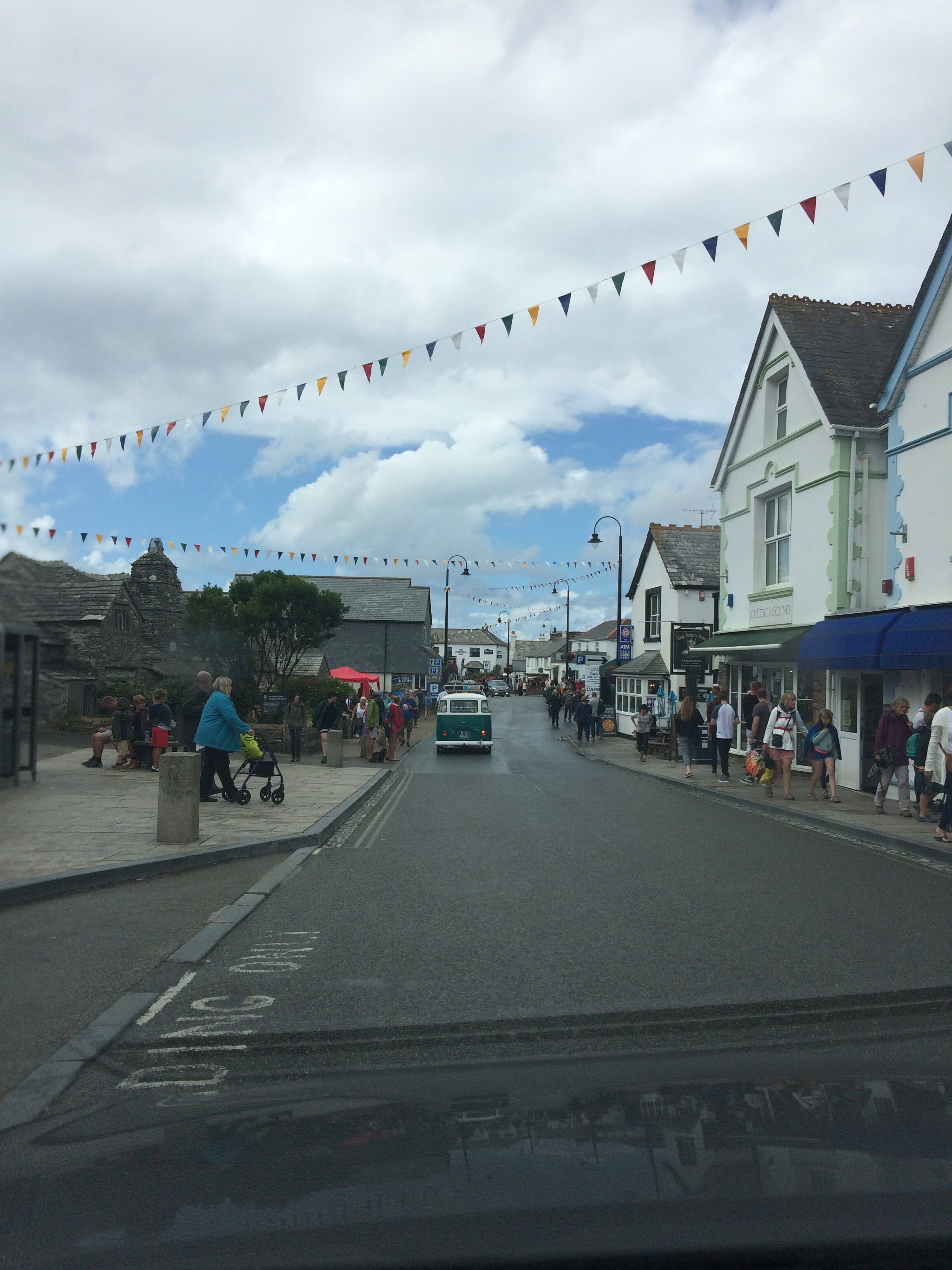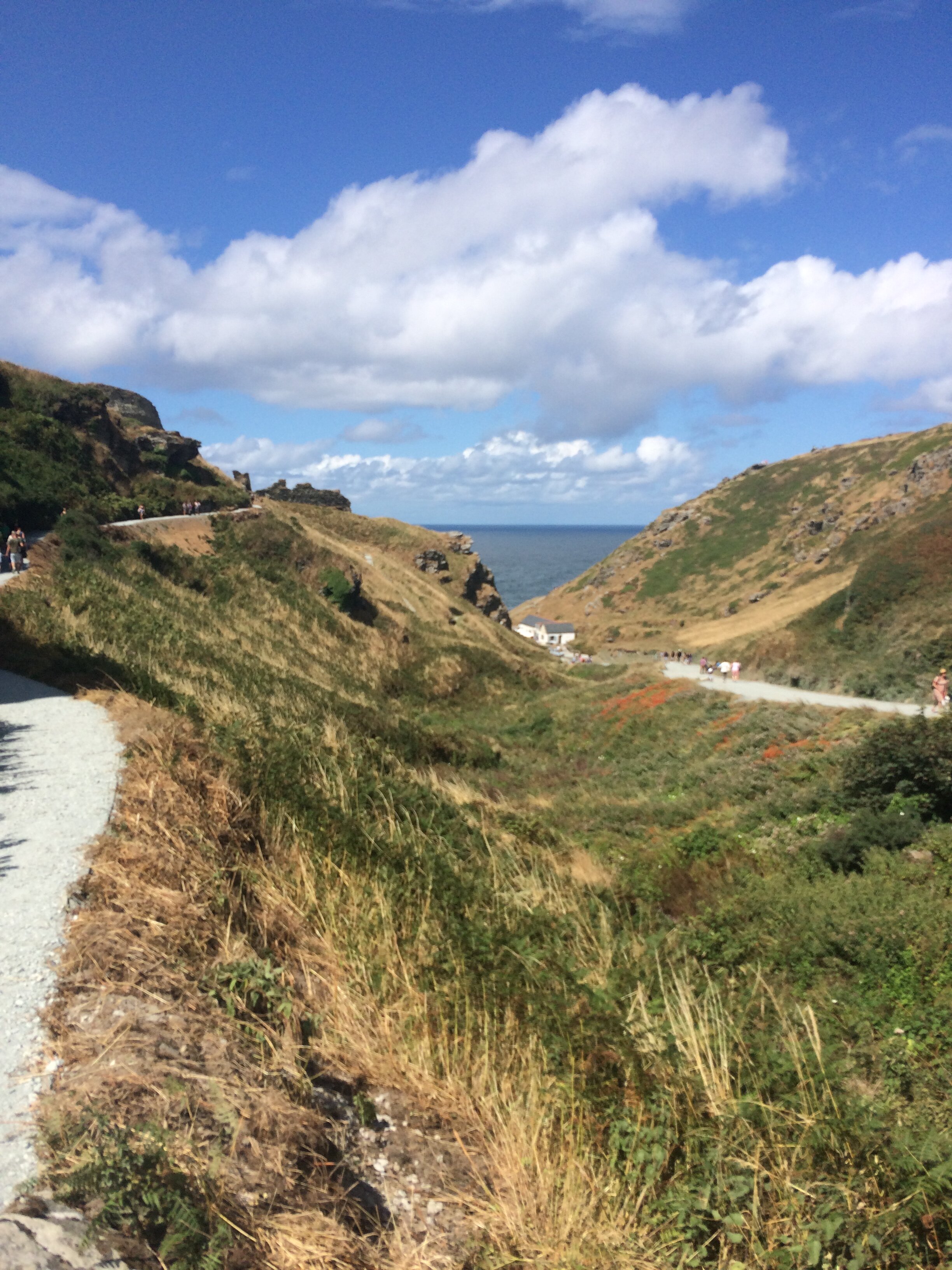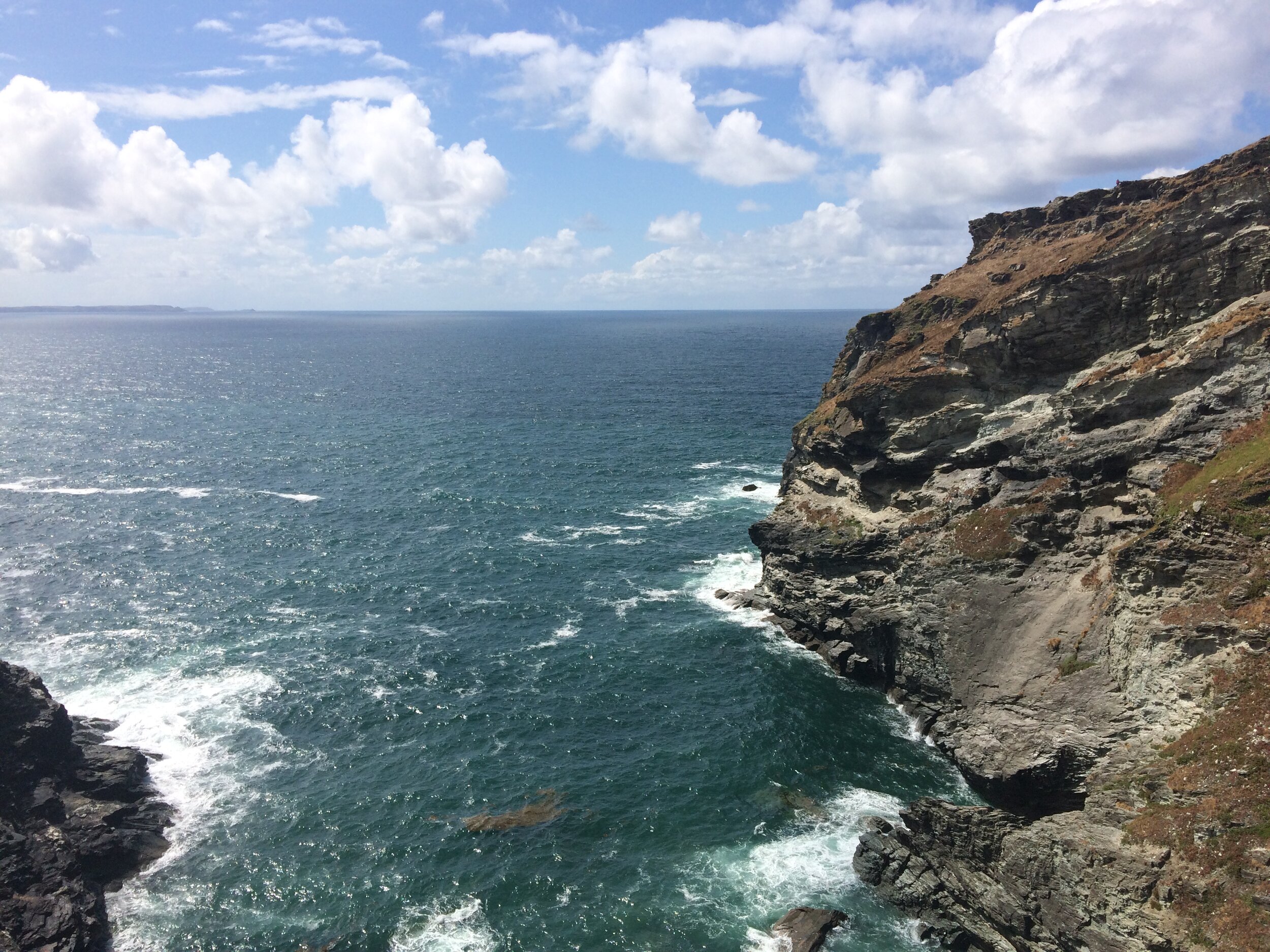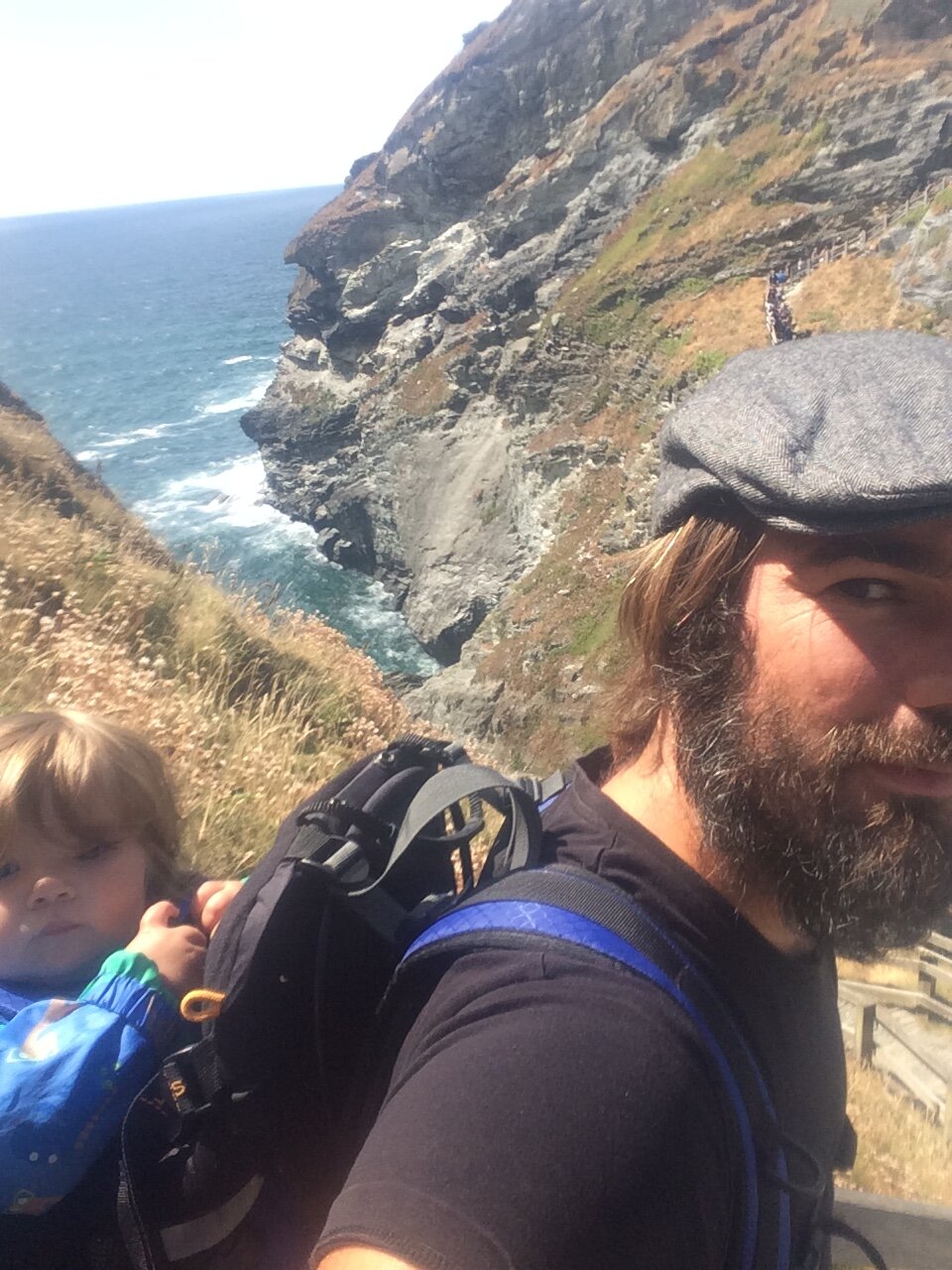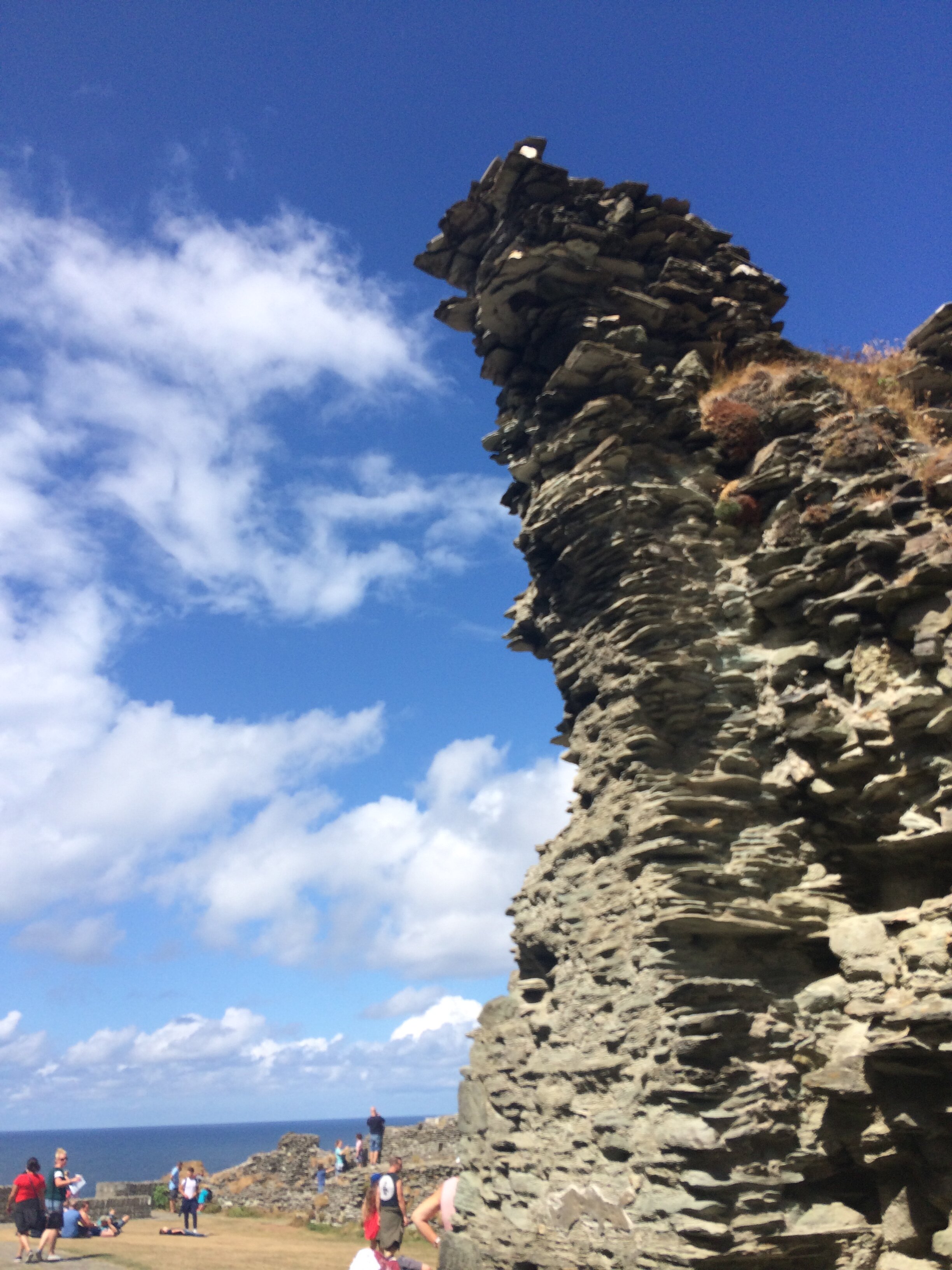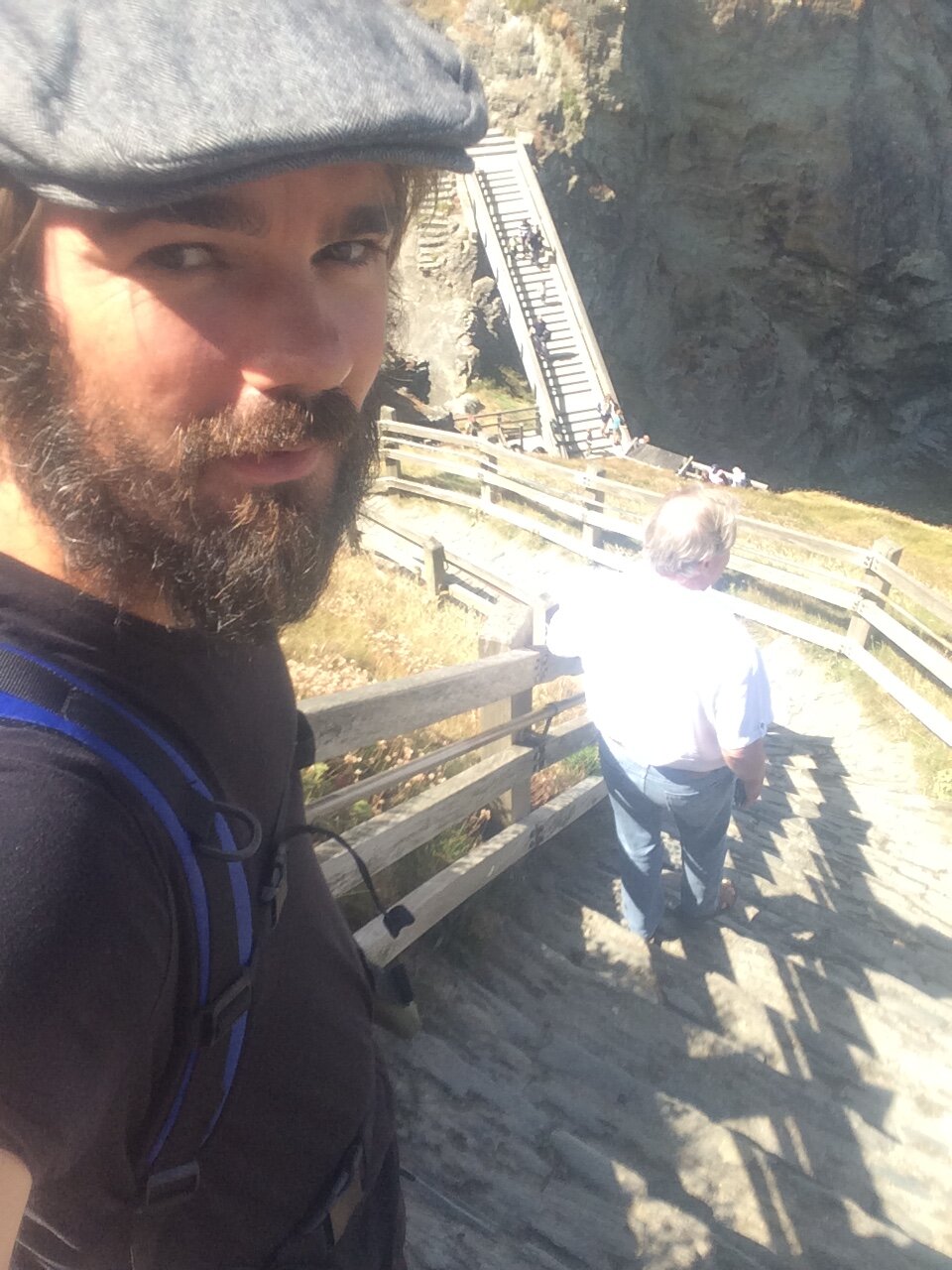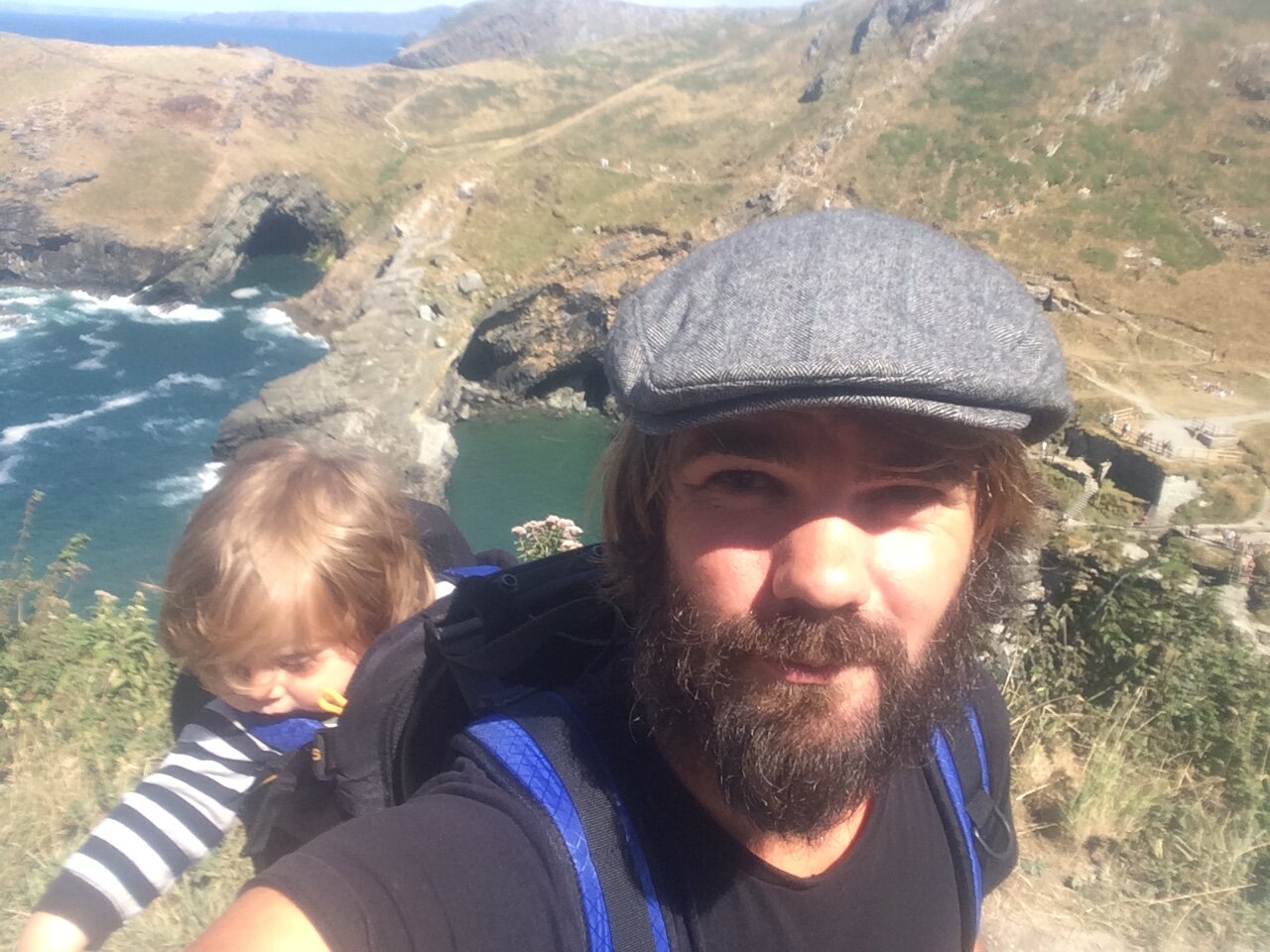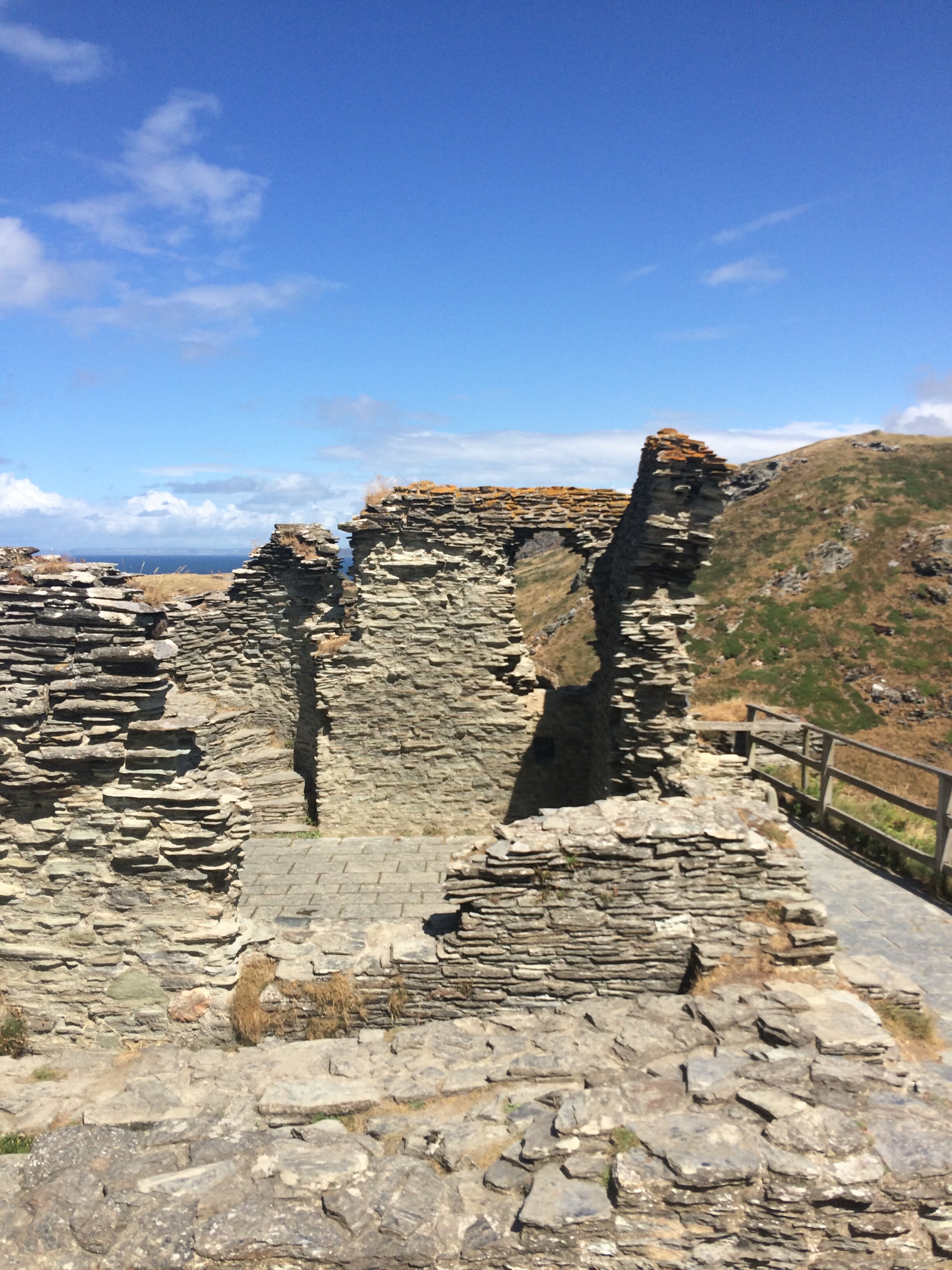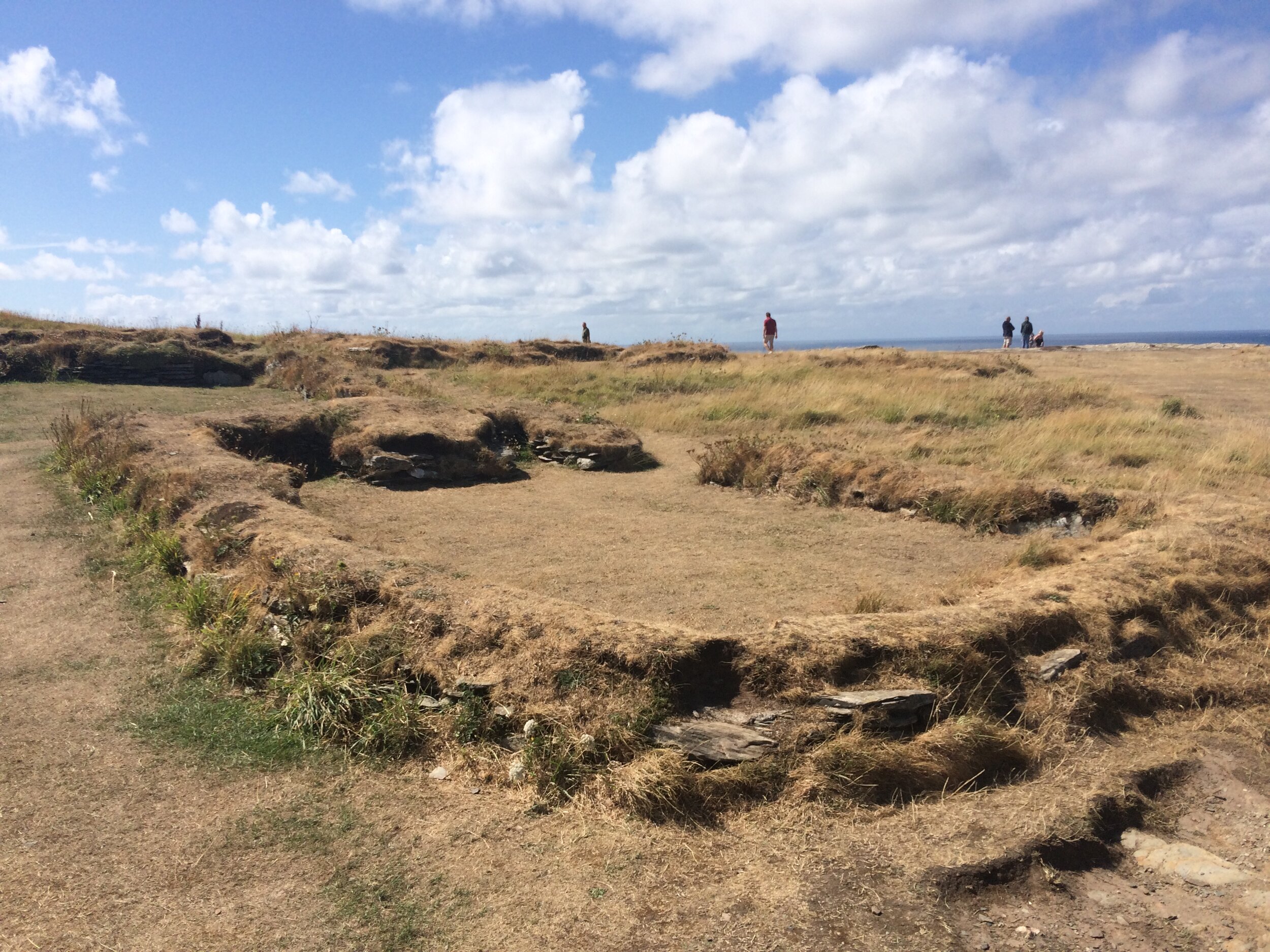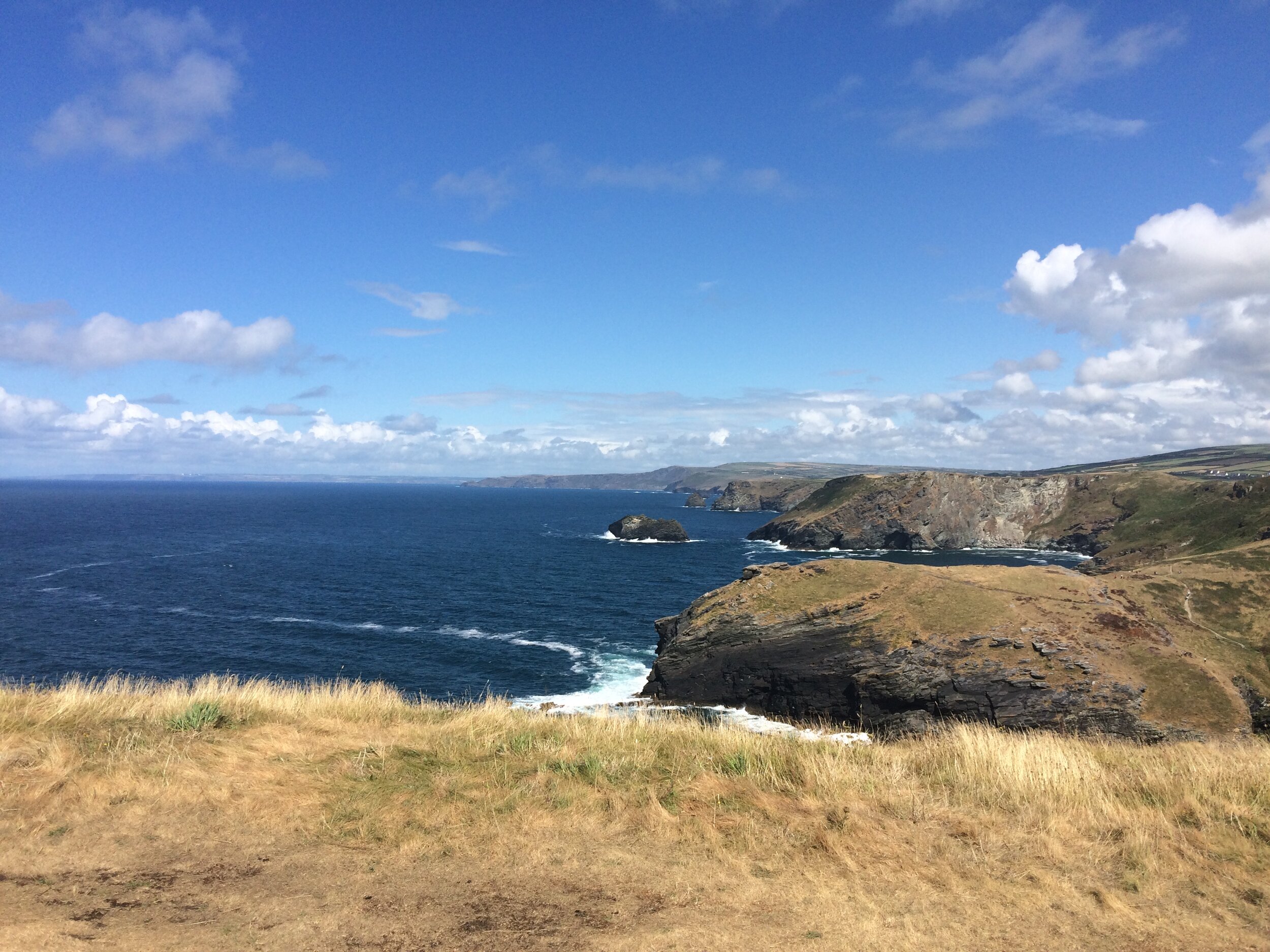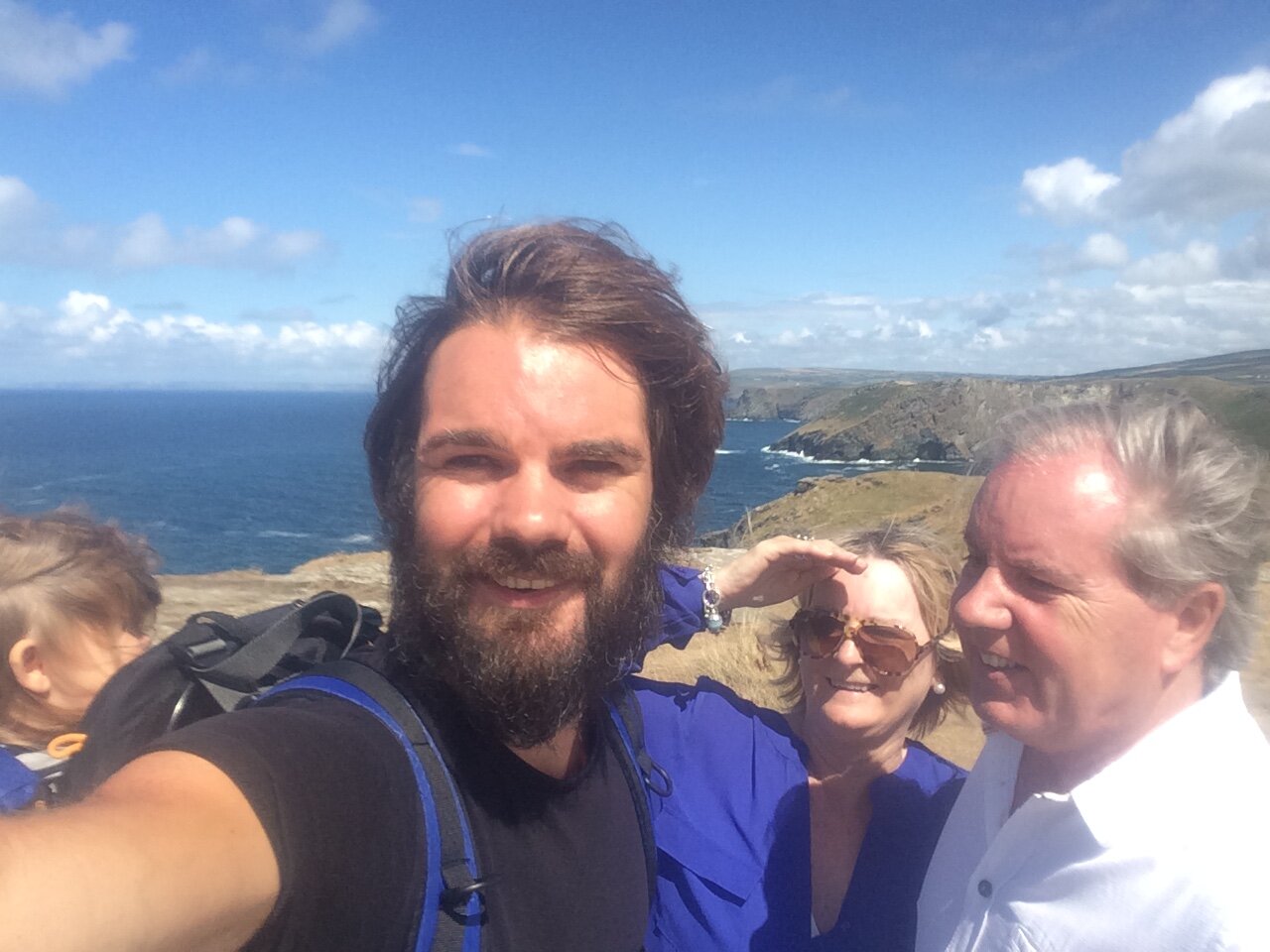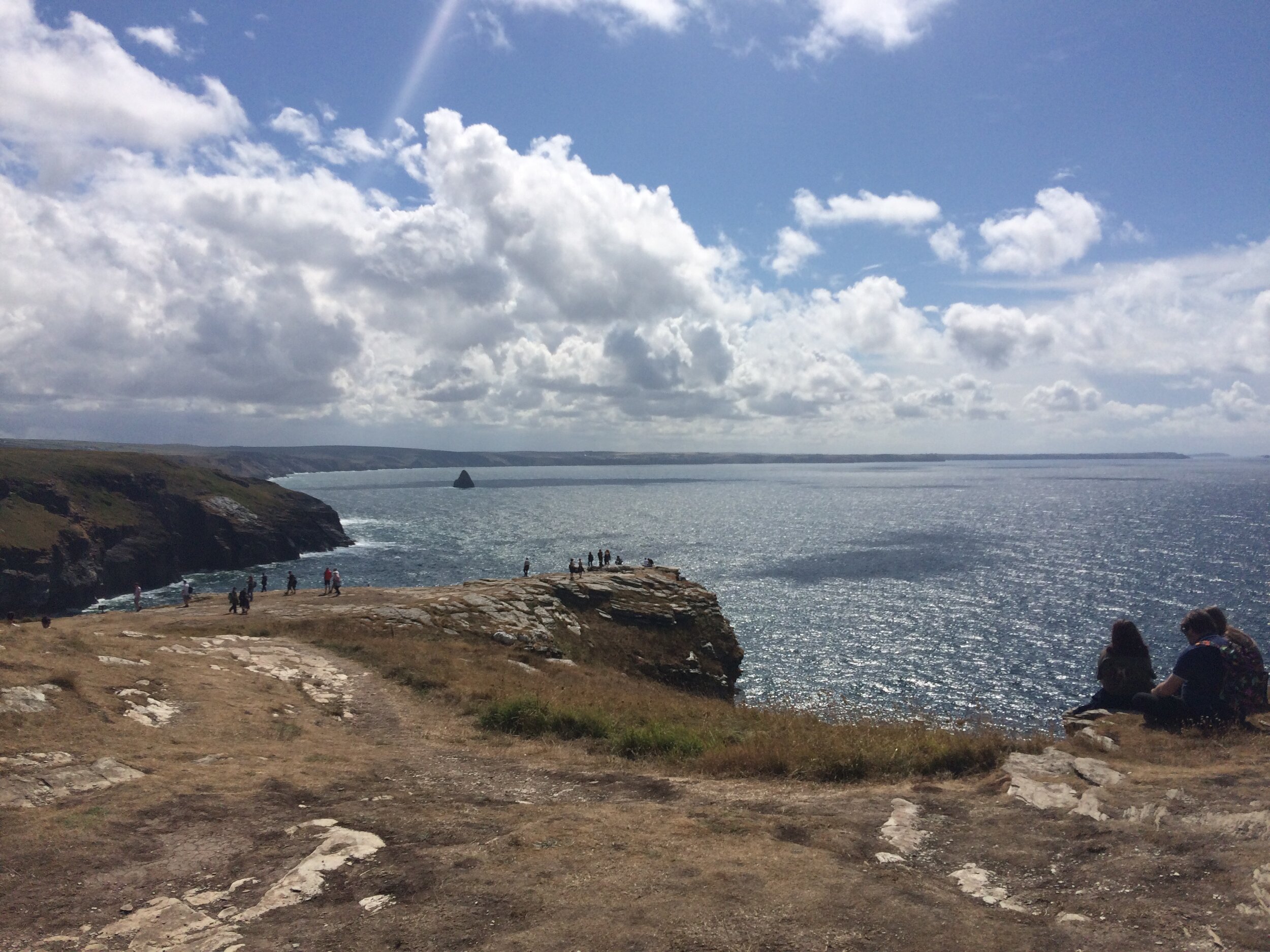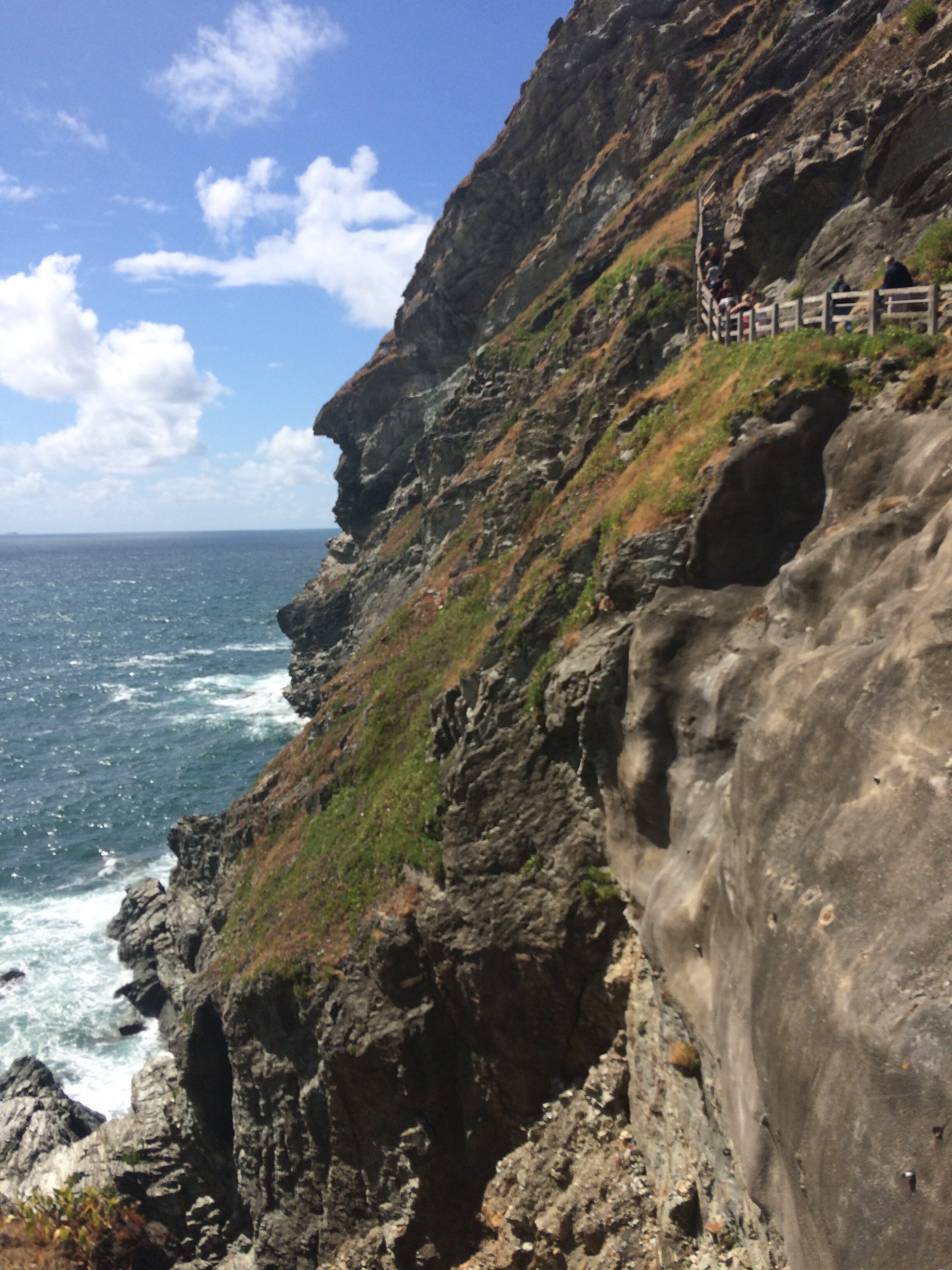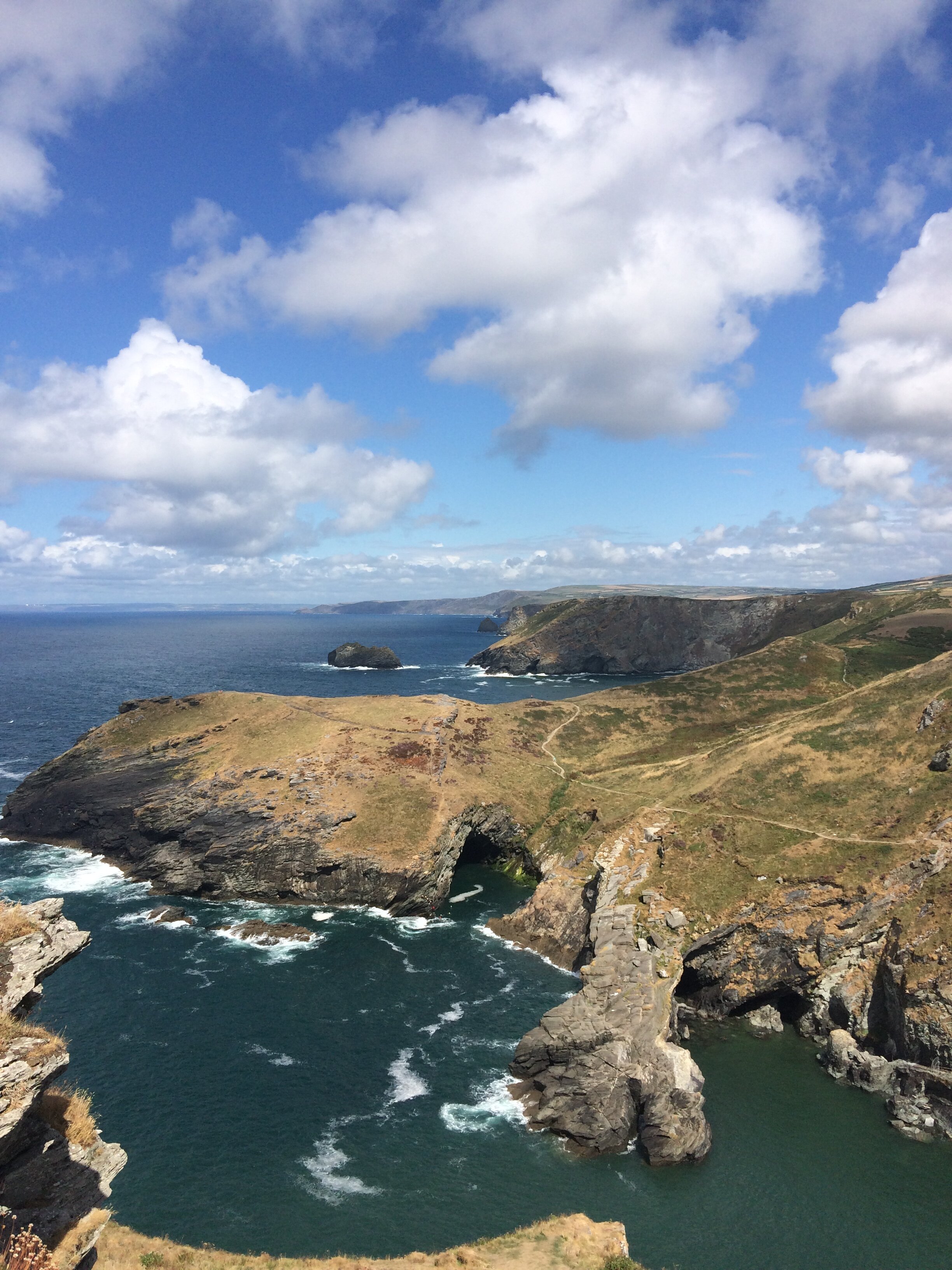On a beautiful bright summer’s day, whilst Emily Archaeomum was hard at work, Audrey and I kidnapped the grandparents and made off on a brief but mystical adventure to the very heartlands of British folklore and mythology.
We were hot on the trail of that most iconic hero, the unrelenting pillar of importance in these ancient and magical lands, none other than the legendary King Arthur.
Arthur is the mythical British king of relentless legend. He is said to have pulled the sword from the stone, befriended ladies in lakes and ruled over all England with his round table of fearless and slightly adulterous Knights. Arthur was advised by a powerful wizard buddy and embarked upon all manner of quests and trials in the name of God, country, chivalry and honour!
There has been much speculation on the origins of the legend of King Arthur, and fierce historical debate as to whether any such King existed at all. The most popular opinion appears to be that Arthur is an idealistic amalgamation of a number of poignant protagonists of the islands rich history. Popularised by Geoffrey of Monmouth in his History of the Kings of Great Britain, Arthur took a central role in the vision of what a great King of England should be.
Tintagel famously appears in Geoffrey’s incredible tales of Arthur. Legend has it that whilst Gorlois, Duke of Cornwall, was at war, he left his wife, Igraine, in the oppidum of Tintagel. The wizard Merlin disguised Uther Pendragon as Gorlois who entered Tintagel and impregnated Igraine. The child she was then said to have conceived was Arthur.
It was here at Tintagel, that we would make our brief pilgrimage, fearlessly following the trail of our infamous hero king.
The scenic drive to Tintagel is incredibly enjoyable, especially during the summer months, though some of the roads in this corner of the island are more than a little hair-raising, narrow winding snake-like stems of concrete flanked by high blinding hedgerows and occasional forested tunnels which twist this way and that through the continuing countryside. Towns and villages appear from nowhere and are gone again just as quickly as they arrived, rustic spectres in a mystic landscape.
We arrived into Tintagel, a kind of bizarre circus-like dream town bustling with tourists and traders. Every shop, bar and cafe is geared towards the legend of Arthur. Imagine if Disneyland bought a quaint English fishing village and shipped in its plastic brand en-masse. Parking wasn’t easy to secure and even trickier to navigate once through the gate, a veritable Battle Royale of vying visitors.
Once parked up, we were able to make our way towards the gem of this incredible outcrop, the cliff edge fortifications that convinced generations of scholars and fantasists that this might be the conception place of the legendary King Arthur. Tintagel is run and maintained by English Heritage. There is a charge to enter for non-members. The fee’s go towards the undoubtedly astonishing costs related to keeping such an important historical landmark safe and sustainable. A worthy cause indeed to keep this spectacular site soaring.
A shuttle bus service was available to ship visitors up and down the long road to the ruins. We decided, however, that as the weather was wonderful and the queues were dreadful, we would walk. This was a good decision, it wasn’t too far and even with Audrey taking full advantage of the daddy packhorse commute, it wasn’t too much of a strain.
Tintagel has a deep and rich history of human activity. An assemblage of Romano British artefacts has been unearthed in the area of the Castle, hinting at the occupation of the peninsula during this period. There could have been a settlement of the British tribe, the Dumnonii, possibly mining and trading tin, which made the area such an important source of wealth and resources.
A later high-status settlement was uncovered on the site, dating to between the 5th and 8th centuries, smack bang in the postulated era of Arthur! Originally hypothesised as the site of a monastery, more recent interpretations have suggested that this was a royal residence. The site was defended by a ditch and the natural barriers of the sea and cliff sides. Evidence from this period included a substantial quantity of imported pottery, suggesting a significant amount of trading activity.
The most fascinating and intriguing archaeological discoveries also came from this period. In 1998, a slate stone, known as the Artognou Stone, was discovered during excavations. The 5th–6thc stone was inscribed in Latin, illustrating the regional use of this language even after the collapse of the Roman Empire. It gained notoriety due to the inscribed name Artognou, argued as a variant of Arthur. Just as incredibly, during 2017 investigations, archaeologists discovered a 7th-century slate window ledge inscribed with a mixture of Latin, Greek and Celtic language and names, indicating a highly connected and literate society on this incredible promontory. A copy of the Artognou Stone, along with a wealth of artefacts uncovered at Tintagel, is on display in the castle museum.
It was later, in the 13th century that the main fortifications and battlements were built by Richard, 3rd Earl of Cornwall. This castle was built after Geoffrey of Monmouth’s fantastic works, which claimed Tintagel to be the conception place of Arthur. Richard, it seems, was keen to keep the connections alive and illuminate his residence as the famous seat of Cornish Kings. It was built in an ancient style and the Arthurian legends were suitably reflected.
Our adventure to Tintagel occurred prior to the creation of an impressive new bridge leading to the castle ruins. Our own experience involved the narrow, slightly death-defying trek up a tiny stairway hugging the cliff edge, terrifying... especially with a toddler on your back! A good exercise to get your heart pumping though and a real sense of grandeur as you look upwards towards the imposing ruins above.
Whilst the experience was one shared in close proximity to a horde of tourists and travellers, Tintagel Castle is definitely worth the visit. I can’t imagine there is ever a quiet moment in this historical corner of the globe so steeped in legend and fantasy. Gallos, the now-famous statue of Arthur, was constantly surrounded by amateur photographers jostling to get the money shot holiday snap. Whichever way you attempt it, you are probably destined to have a strangers family immortalised in your perfect picture! Yet despite the anthill experience of it all, to see the castle ruins, the earlier archaeological traces and most impressively, the spectacular coastal splendour and stunning sea views, was well worth the effort.
We had considered finding a little pub in Tintagel town for a beer and some food, but similar to the castle, the town was swamped in Arthurian revellers. We made our way back to the car and drove through the stunning Cornish countryside again until we found a quieter spot to sit, reflect on our quest, and enjoy some cool refreshing summer lager, wine and juice.
We may not have uncovered the Holy Grail, but we had scaled a fortress and witnessed the wonders of Albion from perhaps its most iconic and ancient point. I’m sure, as Audrey’s first Cornish Castle assault... Arthur would have been most impressed.

